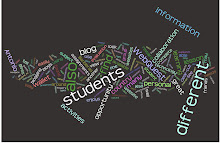I’ve learned a lot from the first phase of implementation of my New Student Academy TechQuest project. It was interesting to see it all come together at the end, at least the first stage of it. It’s really important that the entire is mapped out at least briefly, especially to guide you towards your end goal and to see the light at the end of the tunnel (although judging from mine, there never will be a clear “end”). That map will work as a guide for me during the next few months as I work to complete the entire project. Another important aspect that I would include would do differently is I would take a look at the resources I have for review (not for the actual teaching that I create myself, but for games and activities to send them to after they’ve completed my “class” and need more review) before I create my project. For example, if I have games to learn the information, and then I see the same games to use as resources, there isn’t a point in putting them in my project in the first place as actual learning, because they’ve already been created and I don’t want to reinvent the wheel.
I also am happy to say that I have found a quiz program to use to give feedback while the student is taking the quiz – ZOHO Challenge. It allows students to receive feedback and work their ways to the correct answer. It doesn’t just let the student go through the entire program without being accountable for their learning. It helps create a more meaningful experience with a higher accountability. I will be changing my entire project in regard to Google Forms and switch it with ZOHO. It is a great tool for students and teachers.
If I could give anyone a suggestion from my experience, it would be to 1) have a plan BEFORE you begin the project (actually written on paper), and 2) to start right away and work on it a little bit every week. If you don’t do this and it’s an assignment, you’re going to regret it. If you are just creating the project and it’s not a class you are going to feel overwhelmed and will probably give up if you don’t set a time frame and pace yourself. Also, something to think about is to make the project a stand-alone entity. For example, if you build this on your school website and you lose your job, you won’t be able to take the website with you. So, I recommend creating your own website to build the project.
Finally, I would do the same project again and would try to make more interaction in the learning process at the beginning of the project when the students are actually learning (and not reviewing). I plan to implement the next parts differently in this way (and change the number “class” to reflect this new way of viewing things). I will, as I have said before, use ZOHO Challenge and not Google Forms. I plan to implement this throughout my classes that I give. I will also be expanding my “Academy” to include all the materials and information we learn in class available to the students at home.





